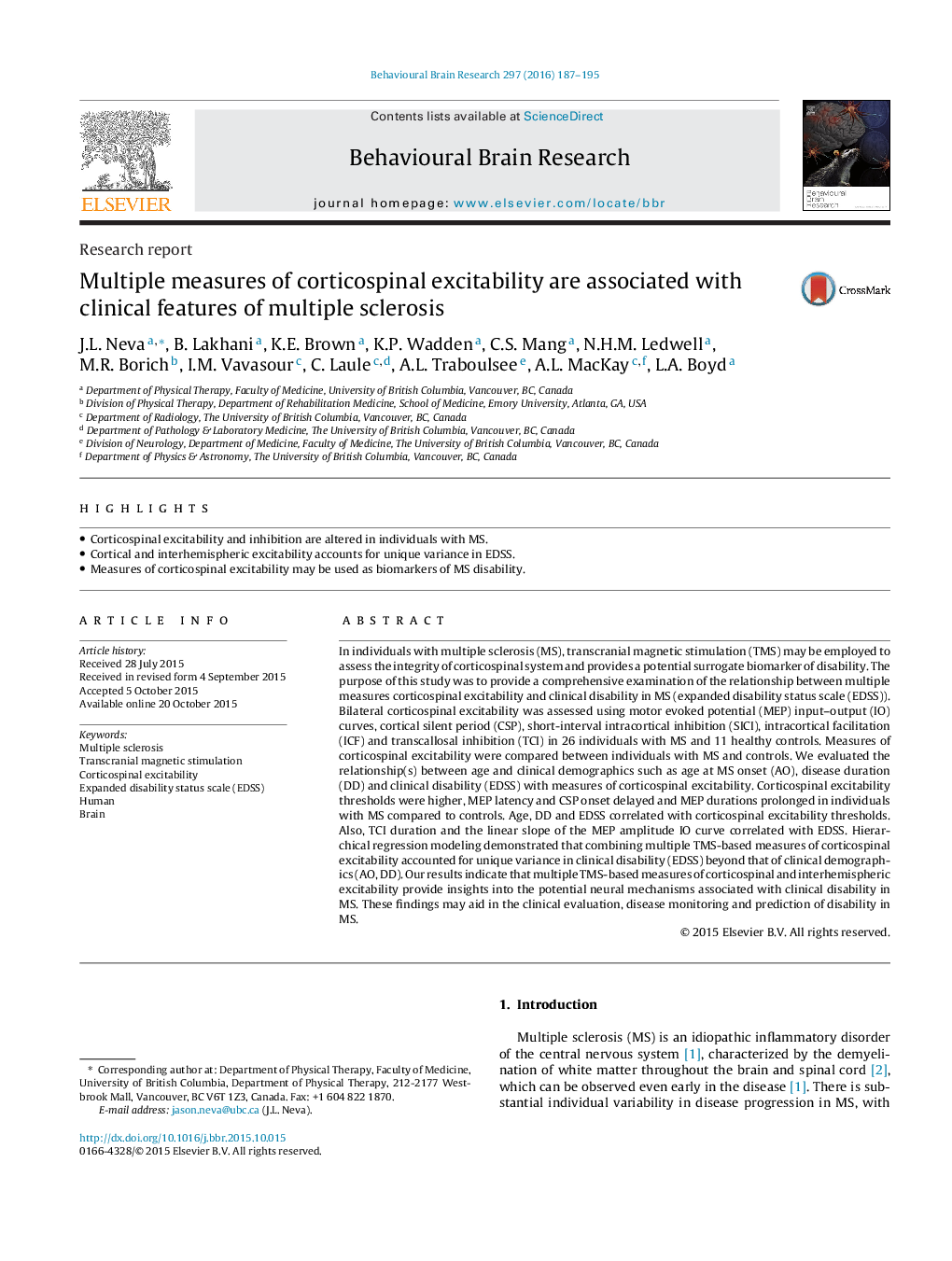| کد مقاله | کد نشریه | سال انتشار | مقاله انگلیسی | نسخه تمام متن |
|---|---|---|---|---|
| 6256390 | 1612935 | 2016 | 9 صفحه PDF | دانلود رایگان |
- Corticospinal excitability and inhibition are altered in individuals with MS.
- Cortical and interhemispheric excitability accounts for unique variance in EDSS.
- Measures of corticospinal excitability may be used as biomarkers of MS disability.
In individuals with multiple sclerosis (MS), transcranial magnetic stimulation (TMS) may be employed to assess the integrity of corticospinal system and provides a potential surrogate biomarker of disability. The purpose of this study was to provide a comprehensive examination of the relationship between multiple measures corticospinal excitability and clinical disability in MS (expanded disability status scale (EDSS)). Bilateral corticospinal excitability was assessed using motor evoked potential (MEP) input-output (IO) curves, cortical silent period (CSP), short-interval intracortical inhibition (SICI), intracortical facilitation (ICF) and transcallosal inhibition (TCI) in 26 individuals with MS and 11 healthy controls. Measures of corticospinal excitability were compared between individuals with MS and controls. We evaluated the relationship(s) between age and clinical demographics such as age at MS onset (AO), disease duration (DD) and clinical disability (EDSS) with measures of corticospinal excitability. Corticospinal excitability thresholds were higher, MEP latency and CSP onset delayed and MEP durations prolonged in individuals with MS compared to controls. Age, DD and EDSS correlated with corticospinal excitability thresholds. Also, TCI duration and the linear slope of the MEP amplitude IO curve correlated with EDSS. Hierarchical regression modeling demonstrated that combining multiple TMS-based measures of corticospinal excitability accounted for unique variance in clinical disability (EDSS) beyond that of clinical demographics (AO, DD). Our results indicate that multiple TMS-based measures of corticospinal and interhemispheric excitability provide insights into the potential neural mechanisms associated with clinical disability in MS. These findings may aid in the clinical evaluation, disease monitoring and prediction of disability in MS.
Journal: Behavioural Brain Research SreeTestContent1 - Volume 297, 15 January 2016, Pages 187-195
